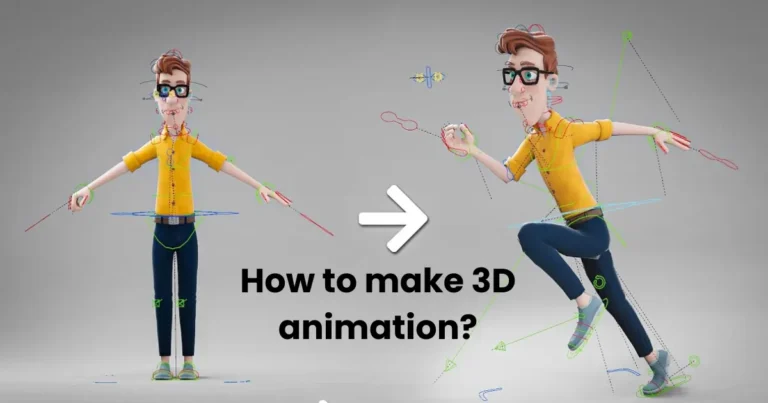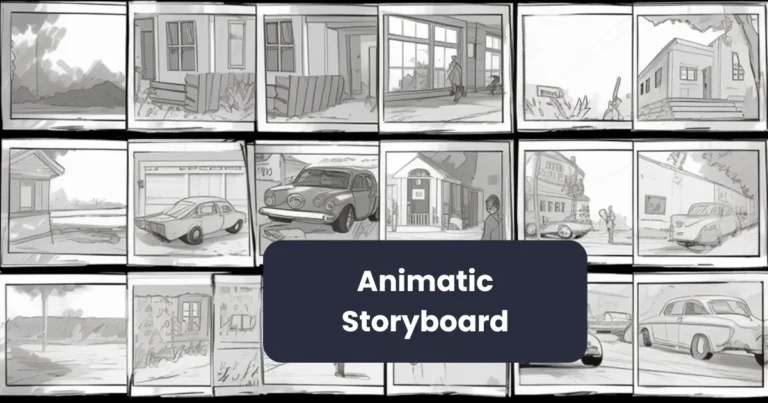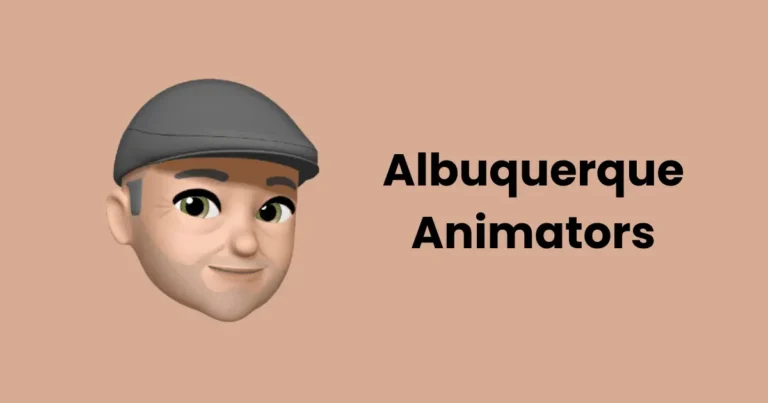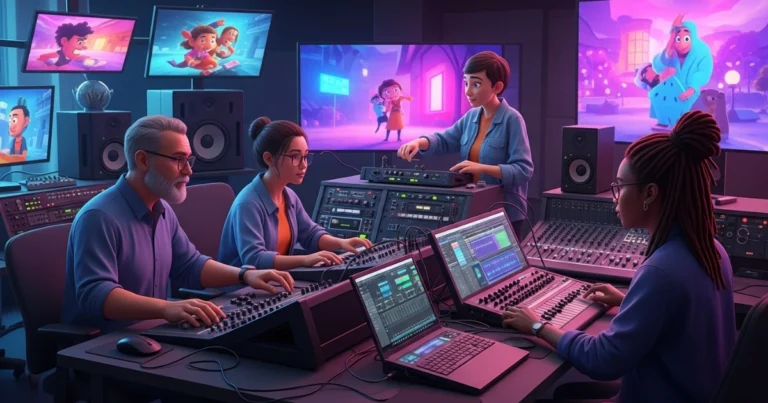Disney Pixar merger | Everything you need to know about the great deal in 2025
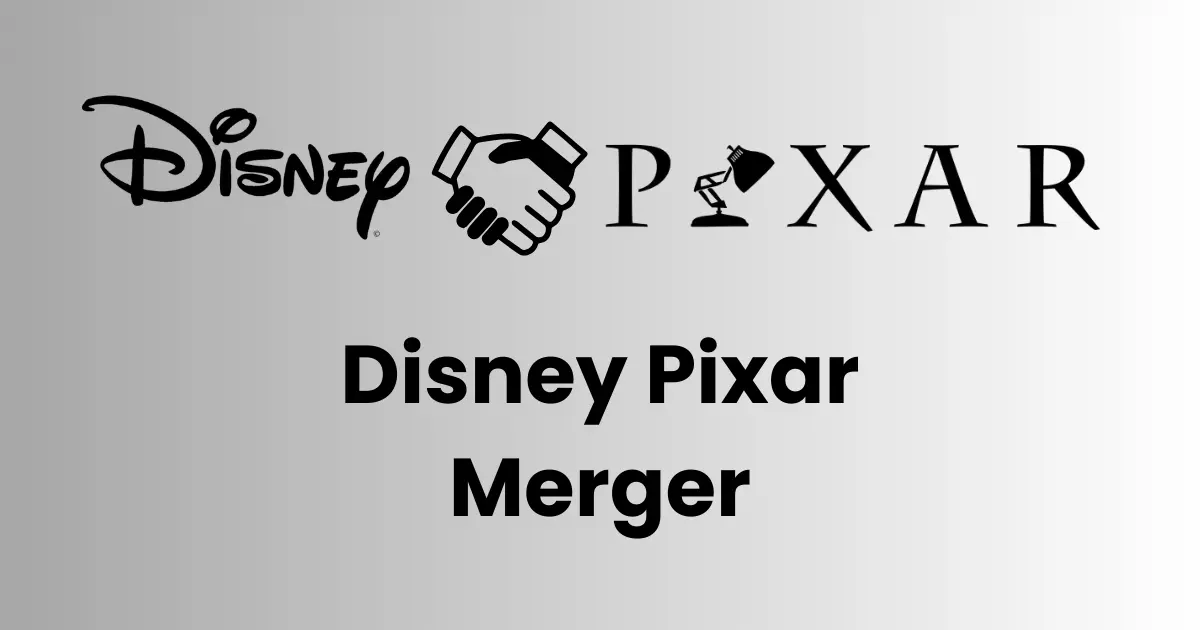
Contents
The Disney Pixar merger marked a defining moment in the world of animation, merging two giants of storytelling and innovation. When The Walt Disney Company acquired Pixar Animation Studios in 2006, the partnership created a powerhouse that would go on to redefine animated filmmaking.
For decades, Disney had been synonymous with heartwarming tales and iconic characters, while Pixar brought a fresh perspective with its groundbreaking technology and imaginative narratives. Together, these two companies reshaped the animation landscape, delivering films that combined emotional depth with cutting-edge visuals. The merger wasn’t just a business deal; it was a fusion of creative minds, technological ingenuity, and a shared passion for storytelling.
This article explores the journey leading to the Disney Pixar merger, its impact on the animation and art industry, and the legacy it continues to build in modern entertainment.
Background of Disney and Pixar
To fully understand the significance of the Disney Pixar merger, it’s essential to explore the histories of these two animation titans. Both companies brought unique strengths to the table, shaping the merger into a transformative event for the entertainment industry.

Disney’s Legacy in Animation
The Walt Disney Company, founded in 1923 by Walt Disney and Roy O. Disney, set the gold standard for animation for nearly a century. From the release of the first synchronized sound cartoon, Steamboat Willie, in 1928 to the groundbreaking success of Snow White and the Seven Dwarfs in 1937, Disney revolutionized animation and storytelling.
Throughout the 20th century, Disney created timeless classics like The Lion King, Beauty and the Beast, and Aladdin. However, by the late 1990s, Disney’s animation division began to face challenges. Its traditional hand-drawn animation struggled to compete with the rising popularity of computer-generated imagery (CGI). This decline in creative output and box office performance created an opportunity for innovation—a gap that Pixar would soon fill.
Pixar’s Rise to Prominence
Pixar Animation Studios began in 1986 as a spin-off from Lucasfilm’s computer division, funded by Steve Jobs. Initially focused on creating cutting-edge computer graphics software, Pixar shifted its focus to animated filmmaking. Under the creative leadership of John Lasseter, the studio released Toy Story in 1995, the first-ever feature-length film entirely created using CGI.
The success of Toy Story established Pixar as a leader in animation, known for its originality, technical excellence, and emotionally resonant stories. Over the next decade, Pixar released a string of critical and commercial hits, including Finding Nemo, The Incredibles, and Monsters, Inc., earning numerous Academy Awards.
Pixar’s combination of technological innovation and compelling storytelling quickly caught the attention of Disney, which distributed Pixar’s films through a partnership agreement beginning in the mid-1990s. However, tensions between the two companies over creative control and financial terms would set the stage for the eventual merger.
Together, Disney and Pixar brought unmatched legacies to the merger: Disney’s rich tradition of hand-drawn classics and Pixar’s pioneering advancements in CGI. The merger combined their strengths, laying the foundation for a new era in animation.
The Journey to the Merger
The path to the Disney Pixar merger was neither swift nor simple. It was marked by collaboration, conflict, and compromise, reflecting the complexities of blending two distinct corporate cultures and creative visions. This section delves into the events and negotiations that ultimately led to this historic partnership.

Early Collaboration Between Disney and Pixar
The relationship between Disney and Pixar began long before the merger, with their first major collaboration on Toy Story in 1995. Disney, already an established leader in the animation industry, agreed to distribute and co-finance Pixar’s films under a production agreement signed in 1991. Pixar, then a fledgling studio, handled the creative and technological aspects, while Disney provided its marketing muscle and distribution network.
This collaboration proved to be a game-changer. Toy Story became a critical and commercial success, grossing over $350 million worldwide. The partnership continued with hits like A Bug’s Life, Finding Nemo, and The Incredibles. Each release solidified Pixar’s reputation as a creative powerhouse and brought lucrative returns for Disney.
However, as Pixar grew more successful, tensions arose. Pixar’s executives, including CEO Steve Jobs, felt that Disney was reaping a disproportionate share of the financial rewards while retaining creative control over Pixar’s projects.
Challenges in Negotiations
By the early 2000s, the Disney-Pixar partnership was strained. Pixar’s contract with Disney was nearing its end, and negotiations for a renewal became contentious. Steve Jobs, representing Pixar, sought better financial terms and greater creative independence. At the same time, Disney, under then-CEO Michael Eisner, was reluctant to cede control over Pixar’s lucrative franchises.
The relationship reached a breaking point when Jobs announced that Pixar would seek a new distribution partner after the release of Cars in 2006. Disney faced a significant challenge: losing Pixar would mean giving up a steady stream of box office hits and technological expertise.
The turning point came in 2005 when Bob Iger succeeded Eisner as Disney’s CEO. Recognizing Pixar’s value not just as a partner but as a creative leader, Iger reopened negotiations with Steve Jobs. Iger’s vision for the future of Disney Animation included revitalizing its storytelling, and Pixar was the perfect ally to achieve that goal.
Finalizing the Deal
In 2006, after months of discussions, Disney announced its acquisition of Pixar in an all-stock deal valued at $7.4 billion. The agreement ensured that Pixar would retain its creative independence—a critical factor for Steve Jobs and Pixar’s leadership. As part of the deal, Jobs became Disney’s largest individual shareholder and joined its board of directors. Additionally, Pixar’s creative heads, including John Lasseter and Ed Catmull, were given significant roles in leading Disney Animation Studios.
This deal wasn’t just a financial transaction; it was a merger of creative visions. Disney gained access to Pixar’s innovative technology and storytelling expertise, while Pixar benefited from Disney’s vast resources and global reach.
The journey to the Disney Pixar merger reflects a tale of mutual respect and strategic alignment. Despite initial conflicts, both companies recognized the value of collaboration, culminating in a partnership that would redefine the animation industry.
The Details of the Disney Pixar Merger
The Disney Pixar merger, finalized in 2006, was a landmark deal that brought together two of the most influential forces in animation. Valued at $7.4 billion, this all-stock acquisition was much more than a financial transaction—it represented a strategic and creative alignment that would shape the future of animated filmmaking. Here, we explore the critical details of the merger, including its financial aspects, leadership changes, and long-term goals.

Key Highlights of the Agreement
- Maintaining Pixar’s Creative Independence
One of the cornerstone agreements of the deal was that Pixar would retain its unique culture and creative autonomy. Pixar’s leadership, including John Lasseter and Ed Catmull, were given significant roles within Disney Animation Studios to ensure that Pixar’s innovative spirit remained intact. This decision was crucial in convincing Pixar to join forces with Disney. - Steve Jobs’ Role in Disney
As part of the acquisition, Pixar’s then-CEO, Steve Jobs, became Disney’s largest individual shareholder, holding approximately 7% of the company. Jobs also joined Disney’s board of directors, giving him a voice in the broader strategic direction of the entertainment giant. - Integration of Creative Teams
While Pixar and Disney Animation Studios operated independently in terms of day-to-day operations, the merger fostered cross-pollination of ideas. Pixar’s cutting-edge technology and storytelling techniques began to influence Disney’s projects, helping revitalize Disney’s animation division.
Financial Aspects of the Deal
The $7.4 billion price tag for Pixar reflected the studio’s immense value as both a creative and technological leader. Disney funded the acquisition entirely through stock, highlighting the confidence both parties had in the potential of their combined future.
This investment was not only about acquiring Pixar’s current projects but also about gaining access to its proprietary technology, talent pool, and successful brand image. The merger gave Disney full ownership of all of Pixar’s existing franchises, including Toy Story, Finding Nemo, and The Incredibles, while ensuring a steady pipeline of innovative animated content.
Strategic Rationale for the Merger
- Revitalizing Disney Animation
By the early 2000s, Disney Animation Studios was struggling to produce hits, with many of its films underperforming at the box office. Pixar’s proven track record of critical and commercial successes was seen as a solution to reinvigorate Disney’s animation division. - Strengthening Disney’s Competitive Edge
The merger allowed Disney to secure its position as the dominant player in animation, especially as rivals like DreamWorks and Blue Sky Studios were gaining traction. By incorporating Pixar’s expertise, Disney not only enhanced its creative output but also bolstered its market share. - Expanding Synergies Across Divisions
The merger created opportunities for synergies beyond animation. Pixar’s franchises were leveraged across Disney’s broader ecosystem, including theme parks, merchandise, and video games, amplifying the financial returns from its films.
The Disney Pixar merger was meticulously planned to ensure that both companies preserved their core strengths while leveraging the benefits of collaboration. It wasn’t just a merger of two businesses—it was a unification of two distinct cultures and creative philosophies, setting the stage for a new golden age of animation.
Impact on the Animation Industry
The Disney Pixar merger had a profound and lasting impact on the animation industry, revolutionizing how animated films are made, marketed, and perceived. By combining Disney’s legacy in storytelling with Pixar’s technological innovation, the merger reshaped industry standards and set new benchmarks for creativity and quality.

Technological Advancements Post-Merger
- Revolutionizing Animation Technology
Pixar had long been a leader in cutting-edge animation technology, pioneering the use of CGI in feature films with Toy Story. After the merger, Disney gained access to Pixar’s proprietary software, such as RenderMan, which enhanced the visual quality of its films. This technology enabled both studios to produce films with richer textures, realistic lighting, and more dynamic visuals. - Streamlining Production Pipelines
The merger facilitated the sharing of technological resources, allowing both studios to optimize their production pipelines. This efficiency led to shorter production timelines and more ambitious projects, raising the bar for competitors.
Revolutionizing Storytelling
- Blending Creative Strengths
Disney and Pixar brought together their unique storytelling philosophies, resulting in films that combined Disney’s emotional depth with Pixar’s innovative narratives. Films like Up, Frozen, and Moana exemplify this synergy, blending heartfelt stories with groundbreaking animation. - Focus on Universal Themes
Post-merger projects began to explore more diverse and complex themes, appealing to audiences of all ages. This shift not only expanded the market for animated films but also elevated their status as a serious art form capable of competing with live-action films.
Setting New Industry Standards
- Raising Expectations for Quality
The consistent critical and commercial success of Disney-Pixar films set a new standard for animated features. Competitors were compelled to invest more heavily in technology, storytelling, and production quality to keep up. - Expanding the Market for Animation
The merger demonstrated that animated films could achieve global box office success, breaking records traditionally dominated by live-action films. This success encouraged other studios to take animation more seriously as a mainstream medium.
Inspiring Creative Competition
- Emergence of New Players
Rival studios like DreamWorks, Illumination, and Sony Pictures Animation were driven to innovate and diversify their offerings in response to the Disney Pixar merger. This increased competition enriched the animation landscape and provided audiences with a broader range of styles and stories. - Pushing Boundaries in Storytelling and Design
To differentiate themselves, competing studios began experimenting with unique animation styles and non-traditional storytelling. Films like Spider-Man: Into the Spider-Verse and The Lego Movie are examples of how the industry evolved in the wake of the merger.
The Disney Pixar merger didn’t just transform the two companies—it reshaped the entire animation industry. By setting new benchmarks for quality, technology, and storytelling, it elevated animated films from family entertainment to a universally celebrated art form, inspiring innovation across the globe.
Cultural Integration
The Disney Pixar merger wasn’t just a financial or strategic alliance; it was also a fusion of two distinct corporate cultures. Disney, with its long history of tradition and structure, and Pixar, known for its innovative and experimental ethos, had to find a way to harmonize their approaches. This cultural integration was pivotal to the success of the merger, ensuring both companies maintained their unique identities while benefiting from the partnership.

Pixar’s Influence on Disney’s Corporate Culture
- Fostering a Spirit of Innovation
Pixar brought a culture of creativity and experimentation to Disney. Pixar’s “brain trust” approach, where teams collaborate freely and offer honest feedback, inspired Disney to rethink its hierarchical decision-making processes. This shift encouraged risk-taking and creative freedom within Disney Animation Studios. - Revitalizing Storytelling
Pixar’s storytelling philosophy, focused on character-driven narratives and emotional resonance, deeply influenced Disney’s approach to filmmaking. Post-merger films like Tangled and Frozen showcased a renewed focus on character depth and innovative storylines, reflecting Pixar’s influence. - Prioritizing Quality Over Quantity
Pixar’s commitment to releasing fewer but higher-quality films inspired Disney to adopt a similar strategy, moving away from its earlier practice of churning out sequels and lower-budget productions. This shift helped restore Disney’s reputation as a leader in animation.
Disney’s Role in Expanding Pixar’s Reach
- Leveraging Disney’s Global Infrastructure
Disney’s extensive resources and worldwide distribution network enabled Pixar to reach an even broader audience. The merger allowed Pixar’s films to gain unprecedented visibility in international markets, boosting their commercial success. - Strengthening Franchises Through Synergy
Disney’s expertise in franchise-building amplified Pixar’s intellectual properties. Characters from films like Toy Story and Cars became global icons, integrated into Disney’s theme parks, merchandise, and television programming. - Preserving Pixar’s Creative Independence
One of Disney’s most significant contributions was allowing Pixar to retain its creative autonomy. By respecting Pixar’s unique culture and leadership, Disney ensured that the studio could continue producing groundbreaking films without being constrained by corporate bureaucracy.
Harmonizing Work Environments
- Cross-Studio Collaboration
While Disney and Pixar operated as separate entities, the merger encouraged collaboration between their creative and technical teams. This exchange of ideas fostered mutual respect and led to innovations that benefited both studios. - Respect for Individual Cultures
Disney ensured that Pixar’s unconventional and casual work environment remained intact. From open office spaces to quirky traditions, Pixar retained its identity, while Disney benefited from observing and adopting some of these practices.
The cultural integration between Disney and Pixar proved to be a model for successful mergers. By blending Pixar’s innovative spirit with Disney’s vast resources and legacy, both studios thrived, creating an environment where creativity and commerce worked hand in hand. This integration not only strengthened their brands but also set the stage for a new era of animated storytelling.
Notable Projects Post-Merger
The Disney Pixar merger set the stage for an unprecedented era of animated filmmaking, resulting in a series of critically acclaimed and commercially successful projects. Both Disney Animation Studios and Pixar continued to thrive, producing films that pushed the boundaries of storytelling and technology. This section highlights some of the most notable projects released after the merger, showcasing the creative synergy between the two studios.

Pixar’s Post-Merger Successes
- Toy Story 3 (2010)
As the first Pixar film released after the merger, Toy Story 3 was a testament to the studio’s continued excellence. The film earned over $1 billion at the global box office and won the Academy Award for Best Animated Feature. Its emotionally resonant story and stunning visuals cemented Pixar’s reputation as a leader in animation. - Inside Out (2015)
A groundbreaking exploration of human emotions, Inside Out showcased Pixar’s ability to tackle complex themes while appealing to audiences of all ages. The film was praised for its originality and earned an Academy Award for Best Animated Feature, further solidifying Pixar’s innovative approach. - Coco (2017)
Coco celebrated Mexican culture with breathtaking visuals and a deeply moving story about family and tradition. The film’s success underscored Pixar’s commitment to diverse storytelling, earning widespread acclaim and another Oscar for Best Animated Feature.
Disney Animation Studios’ Renaissance
- Tangled (2010)
Often considered the start of Disney Animation’s revival, Tangled combined the studio’s classic storytelling charm with Pixar-inspired technological advancements. The film’s use of CGI and its heartfelt narrative set a new standard for Disney’s animated features. - Frozen (2013)
Frozen became a cultural phenomenon, grossing over $1.2 billion worldwide and winning two Academy Awards. Its memorable songs, like “Let It Go,” and themes of sisterhood showcased Disney’s evolution in storytelling and its ability to resonate with modern audiences. - Zootopia (2016)
Tackling social issues like prejudice and inclusion, Zootopia demonstrated Disney’s willingness to address contemporary themes in its films. The movie’s engaging story and vibrant world-building earned it critical acclaim and an Academy Award for Best Animated Feature.
Collaborative Influences in Animation
While Disney and Pixar operated independently, the merger facilitated an exchange of ideas and technologies that influenced their respective projects:
- Big Hero 6 (2014): Combining Pixar’s innovative storytelling techniques with Disney’s creative charm, this superhero-themed film expanded the possibilities of animated genres.
- Ratatouille (2007): Released shortly after the merger, Ratatouille highlighted Pixar’s knack for blending unique concepts with heartfelt narratives, winning an Oscar for Best Animated Feature.
- Moana (2016): A Disney project deeply influenced by Pixar’s storytelling ethos, Moana celebrated Polynesian culture with stunning animation and a compelling narrative.
Impact on Franchises and Sequels
The merger also resulted in the continuation of beloved franchises, such as:
- Finding Dory (2016): The highly anticipated sequel to Finding Nemo was a commercial hit, reflecting Pixar’s strength in building enduring franchises.
- Incredibles 2 (2018): Released 14 years after the original, the sequel combined nostalgia with modern storytelling, becoming one of Pixar’s highest-grossing films.
- Frozen II (2019): Expanding on the legacy of Frozen, the sequel broke records as the highest-grossing animated film of all time.
The projects produced post-merger highlight how the Disney Pixar merger revitalized both studios, combining their strengths to redefine animated storytelling. These films not only entertained global audiences but also set new creative and technological benchmarks for the industry.
Conclusion
The Disney Pixar merger is a shining example of how two companies can unite their strengths to create something greater than the sum of their parts. By blending Disney’s legacy of storytelling with Pixar’s innovative approach to technology and creativity, the merger revitalized the animation industry and set a new standard for excellence. Both studios benefited immensely from the collaboration, producing a stream of critically acclaimed and commercially successful films that captivated audiences worldwide. Through strategic planning, respect for each other’s cultures, and a shared commitment to quality, Disney and Pixar demonstrated how partnerships can drive growth and redefine an industry.
Beyond financial success, the merger left an enduring legacy on the art of animation and corporate mergers alike. It taught valuable lessons about fostering innovation, prioritizing creative freedom, and leveraging synergies to achieve long-term success. By embracing a vision of mutual respect and collaboration, Disney and Pixar didn’t just transform their futures—they inspired countless creators and studios to aim higher and dream bigger. The merger’s impact continues to resonate, proving that when businesses focus on shared goals and complementary strengths, the possibilities are endless.


